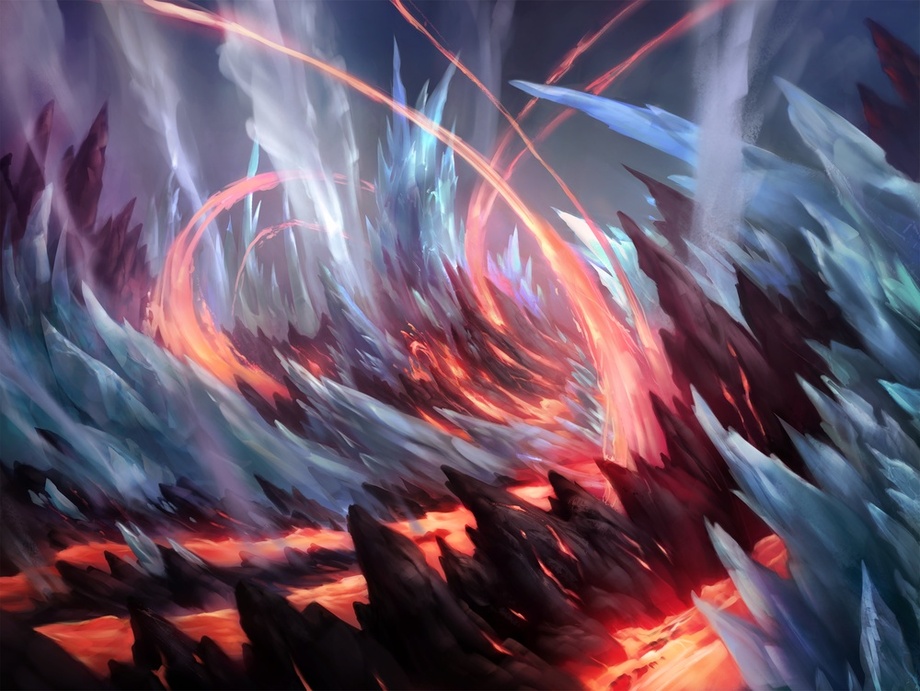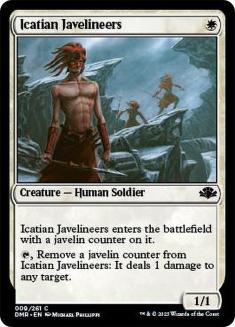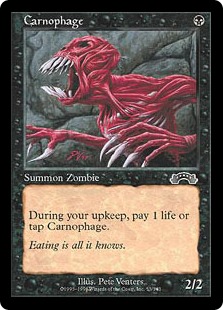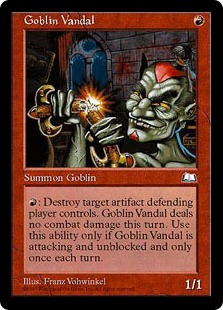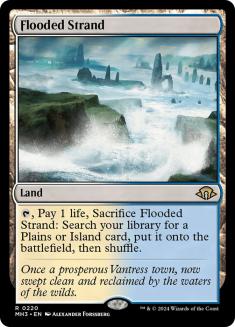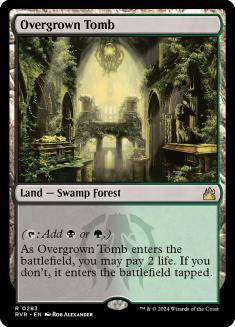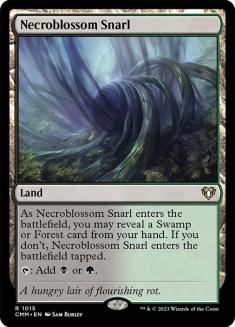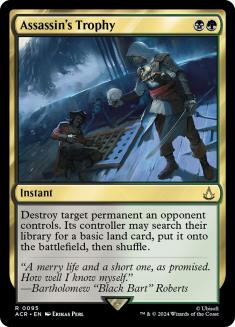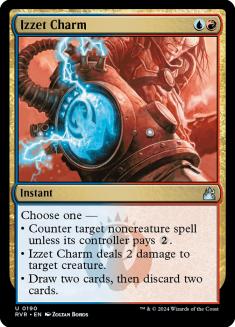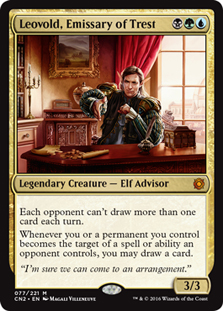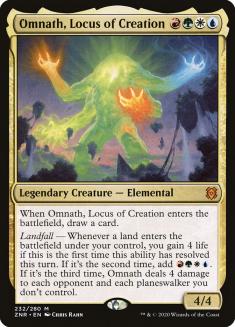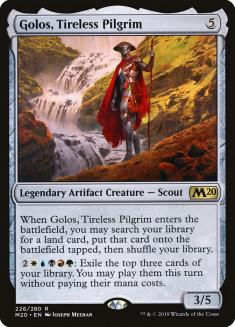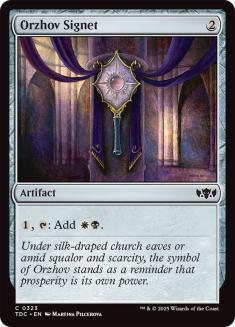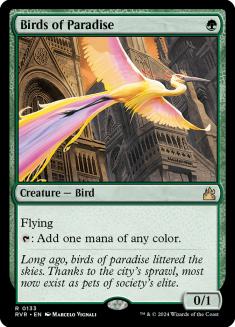Howdy, gamers! With Supreme Draft coming to an end and the next update to the MTGO Cube one week out, that leaves a week for me to write about something a bit more abstract. Last week on Twitter, somebody tagged me on a post asking about numbers of cards by color to include in a Cube, a topic that I haven’t previously written on, so here we are!
What I found interesting about the question was how matter-of-fact it was: “How many cards of each color should I include in a Cube?” Meanwhile, I had to ask for clarification to know what the writer meant!
To be fair, when Cube was a new concept, there were general guidelines for this sort of thing that curators generally followed. Not only were there numbers that Cubes generally skewed towards by color, there were also recommended breakdowns for percentage of creatures versus other card types by color. The creature breakdown is an antiquated notion from when creatures were much weaker and being vocal about the need for volume was more important because you couldn’t actually build a good deck using only the “good” aggressive creatures; you needed to go out of your way to fill in a more complete aggressive roster. When I tell you that Whipcorder used to be good…
The notion that a Cube “should” have a certain number of cards of a given color of card is also somewhat antiquated, albeit for different reasons. Color restrictions and imbalances aren’t a new concept in Cube design, though they have definitely risen to higher prominence in recent years. More than that, Cube design has just come a long way in terms of how we approach putting a list together. So many ideas have been tried at this point, both successfully and unsuccessfully, that we can ask more specific questions based on goals, rather than approach the concept of a Cube completely abstractly.
Before we can talk about numbers, we need to know what kind of Cube we’re building. Many designers will have some concept to start from, like a format-specific Cube or a card type that they want their Cube to highlight, while many new Cube designers just want to build a Cube and haven’t considered anything beyond that! Hopefully you’ll find the following methodology useful, regardless of how much or little idea you have of what kind of Cube you want to build.
Determine the Cube Size
Before we can determine how much we need of anything, we need to establish how many total cards we want in our Cube! The number of players you want to support in your drafts heavily informs this, with 360 cards being the minimum to support eight players and 540 being a very common number to support eight-plus with a more varied card pool by draft. I’ve been an advocate of 180-card Cubes, affectionately referred to as “Twoberts”, for a two- to four-player Draft experience for a few years now.
I also see 450-card lists fairly commonly, with any division of 45 being a typical target point, as that’s how many cards you need per drafter. Of course, there’s no reason that you need to stick to any size, and adding or subtracting cards as you see fit, so long as you have enough cards to play, is perfectly valid. I’ve written a little on Cube size in the past, and we did an episode of The 540 on the concept as well. Again, Cube size is only scientific to the extent that you need enough cards to actually play, but it’s very much an art beyond that.
Start with Lands
When I start assembling my Cube lists on Cube Cobra, I officially add the lands to the file last, but that’s because I have a lot of experience designing Cubes and I already know which lands I’m adding before I start. If you’re newer to Cube design, then I strongly recommend spending time considering your land suite before getting deep into colors and color pairs. Surely you’ll have individual cards and perhaps archetypes in mind before you do this, but you can’t build functional Magic decks without reliable manabases, so it just makes sense to start with the lands because they’ll influence what sorts of spells are realistically castable in your environment!
A lot of factors go into land selection, and with the original dual lands in conjunction with fetchlands very loudly being the most powerful mana-fixing available, both your budget and desired ease of fixing are things to consider very early on in the design process. Fetchlands and fetchable duals, particularly Triomes, enable players to play three or more colors, whereas shocklands, fastlands, painlands, and any land that enters the battlefield tapped while only tapping for two different colors will push players to draft more two- to three-color decks. The total number of lands matters, but the incentives of the lands you select matter a lot, too.
Starting from 180-card Cubes, I generally like 30 mana-fixing lands for my Twobert designs. I stuck to two-color lands for the original Twobert and specifically eschewed fetchlands to push players to keep things to two or three colors. I’ve experimented a bit with fetchlands and fetchable duals at this Cube size, with fetches plus shocks being the backbone of manabases in my Tempo Twobert, and I’ve found that fetches with even just one fetchable cycle allows players to pretty consistently draft four-color decks. More recently, I started playing with fetchlands along with shocklands and surveil lands in the Monster Module of my Spooky Cube, and have found that this makes five-color mana pretty reliable if that interests you.
If you want players to play two colors, then twenty lands that aren’t fetchlands feels like the realistic minimum for a Twobert. When scaling to larger sizes, it’s fairly easy to jump from 180 to 360, with 50 being the minimum number of lands that I start with at that size, and 60 being closer to my preference just to ensure that players can cast their spells. The presence of fetchlands with fetchable duals becomes more significant at larger sizes, just because you’re less likely to see the specific two-color lands that you want as the environment becomes larger. As such, I would set 60 as the actual minimum for a 360-card Cube if you only include lands that fix for two colors.
Notably, the quality of mana-fixing lands does fall off significantly after the first six or seven cycles of duals, and as such, I don’t advocate to continue scaling the number of lands exactly from 360 cards to 540. Mathematically, it makes sense to add 50% more lands when you increase your Cube size in this way, but the quality of lands does matter a lot as your environment grows larger and increases the variance of drafting. You definitely want more lands for larger Cubes, but not to the point where you want to see shocklands and something much, much weaker like Snarls in the same environment.
It becomes really difficult to draft three colors at 540-cards without at least having fetchlands and a fetchable cycle or two, and the relative power level of the mana-fixing that these cycles offer is why you see some designers opting to double up on fetches and fetchable duals at this Cube size to help ensure that players can cast their spells.
Step 2: Gold and Colorless
Once you have a good idea of the number and types of lands that you want in your Cube and how many colors you want players to play, I find that it’s good to look at gold and colorless cards next. Gold cards will push players to play more colors if that’s what you’re trying to incentivize, and colorless cards are very useful in adding consistency to decks of many colors and playables for mono-color decks. I tend to have a lot of mono-colored cards selected before I fully flesh out my gold column, but even if I don’t know exactly which gold cards I’ll be using I tend to have a general idea of how many gold cards I want and set those slots aside before I really get into firm numbers for mono-color cards.
Gold cards tend to be cool and fun, though they are restrictive as well. For my Twobert designs, I tend to feature two or three gold cards of a given color pair, and for 360-plus-card Cubes, you tend to see about five cards for each color pair. I generally like trying to make it so that each gold card in a particular color pair would play well in the same deck, and without calling out any specific color pair you do tend to run out of appealing gold options for at least one guild when you go beyond about five gold cards. I find that it’s best to keep that number low, even if you have a lot of exciting options for one guild, rather than adding less appealing cards in the weaker guilds, but color imbalance is an option here as well!
If you specifically want to support a gold theme or want players to draft two colors as a minimum, then you’ll absolutely want to go higher on two-color cards! I sketched out a Domain Twobert a couple of years ago that serves as a nice example of what a Cube that skews more heavily gold looks like. Another loud aspect of the Domain Twobert is that it doesn’t shy away from cards of three or more colors, which you should generally use sparingly in most Cubes.
Three-color cards require a lot of fixing to be reliably castable, and they have to be desired and drafted by the right player to show up at all. A very small number can be fun, and a five-color option as something aspirational can be especially fun, but most Cubes pepper in cards of three or more colors for reasons that are pretty transparent. They simply have lower rates of play than cards that are easier to cast.
The size of a given Cube’s colorless column is largely contingent on two pretty specific things: whether you find the impact of mana rocks like Signets desirable, and whether you want to have any kind of artifacts-matter theme. The answer for my original Twobert to both of these questions is no, so there are hardly any colorless cards in that Cube. My Artifact Twobert is an example of the other extreme, with nearly half of the cards in the Cube being colorless spells!
There are certainly other considerations for your Cube’s colorless column, but these are the most significant questions that will be the difference between you wanting closer to ten colorless cards or closer to 50 or 100. Your number can fluctuate a fair amount otherwise, but mana rocks and supporting artifacts as a theme by volume are the two tentpoles that cause radical shifts in the number, which will in turn affect your counts most for cards in the various colors.
Finally, Mono-Color
Last but not necessarily least, we have our mono-color cards. Cubes without a thematic reason to do otherwise will typically just divide any remaining slots among the five colors of Magic evenly. You might have fewer cards of one color, like I do with green in the Artifact Twobert. You might have significantly more cards of one color, like we often see in powered Cubes. At the extreme, you might eschew one or more colors entirely! However you approach this, I find myself adding the final mono-colored cards to finish off my lists.
Of course, the methodology I outlined today is meant to be a helpful tool, not a strict guide. There are absolutely reasons to start with mono-color cards. My original Twobert list, for example, deliberately features 23 cards of each color to represent the abstract “deck” of that color, which is a framework that I used to help ensure the environment’s playability. I referenced 30 lands as a number that I like for 180-card Cubes and a good starting point, though I actually first landed on that number working in the opposite direction!
You also might start your Cube design with a list of cards that you like and build outward from there. Maybe you have a collection of your favorite black cards and you want to turn that into a Cube. It’s not like there’s a wrong way to do it! But if you’re stuck in your curation, I do hope that what I’ve presented today is useful in getting some traction on your design. Happy building, and happy Cubing!

